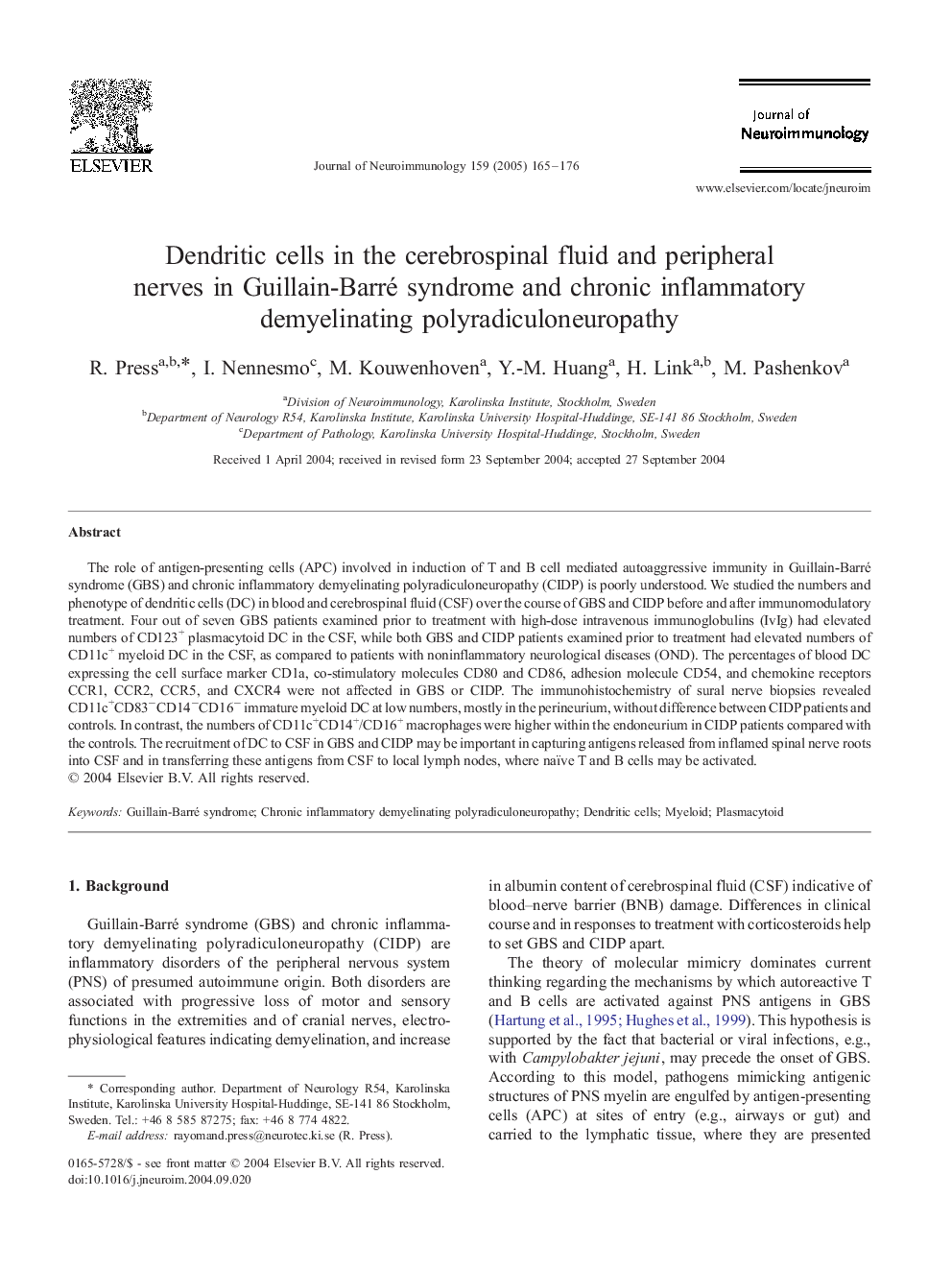| Article ID | Journal | Published Year | Pages | File Type |
|---|---|---|---|---|
| 9194768 | Journal of Neuroimmunology | 2005 | 12 Pages |
Abstract
The role of antigen-presenting cells (APC) involved in induction of T and B cell mediated autoaggressive immunity in Guillain-Barré syndrome (GBS) and chronic inflammatory demyelinating polyradiculoneuropathy (CIDP) is poorly understood. We studied the numbers and phenotype of dendritic cells (DC) in blood and cerebrospinal fluid (CSF) over the course of GBS and CIDP before and after immunomodulatory treatment. Four out of seven GBS patients examined prior to treatment with high-dose intravenous immunoglobulins (IvIg) had elevated numbers of CD123+ plasmacytoid DC in the CSF, while both GBS and CIDP patients examined prior to treatment had elevated numbers of CD11c+ myeloid DC in the CSF, as compared to patients with noninflammatory neurological diseases (OND). The percentages of blood DC expressing the cell surface marker CD1a, co-stimulatory molecules CD80 and CD86, adhesion molecule CD54, and chemokine receptors CCR1, CCR2, CCR5, and CXCR4 were not affected in GBS or CIDP. The immunohistochemistry of sural nerve biopsies revealed CD11c+CD83âCD14âCD16â immature myeloid DC at low numbers, mostly in the perineurium, without difference between CIDP patients and controls. In contrast, the numbers of CD11c+CD14+/CD16+ macrophages were higher within the endoneurium in CIDP patients compared with the controls. The recruitment of DC to CSF in GBS and CIDP may be important in capturing antigens released from inflamed spinal nerve roots into CSF and in transferring these antigens from CSF to local lymph nodes, where naïve T and B cells may be activated.
Keywords
Related Topics
Life Sciences
Immunology and Microbiology
Immunology
Authors
R. Press, I. Nennesmo, M. Kouwenhoven, Y.-M. Huang, H. Link, M. Pashenkov,
